It’s handy to have a first aid kit in your home that’s absolutely brimming with everything you need in case an emergency ever happens to strike your household (knock on wood that it doesn’t ever happen, of course, but some things are just inevitable. That inevitability tends to increase tenfold with the addition of children).
Obviously, not all kits are created equal, though. For instance, many of the kits that you’ll find at your local grocery store either have absolutely nothing to treat in them at all (they’re only stocked with gauze, tape, and maybe some band-aids), or they’re filled with medications that don’t do a whole lot more than mask any symptom that your body might be experiencing.
It was a couple of years ago now that I decided to go through our medicine cabinets (and the rest of the house, really) and throw out absolutely anything that wasn’t good for us (and I’ll admit, the bathroom cabinets did indeed look rather empty when I was finished) in exchange for all-natural, healthy alternatives (you know, the things that people used to use before doctors and pharmaceutical companies came along). After a while, the bare cabinets began to take a much more organic shape, but obviously not everything in there is going to be needed all the time.
Which brings me back to the whole point of this post. Not everyone’s going to be as keen on going completely natural as I was. Still, I firmly believe that every household should at least pack an all-natural first aid kit so that no matter what little (or even semi-big) things life throws at you, you can be prepared without having to worry about chemicals and/or adverse reactions to what seem like harmless medications. Each item I’ve included can be used for a variety of different things (which is always super handy) and can easily be found at just about any health food store (and if all else fails, you can definitely find these products online).
13 Items Every All Natural First Aid Kit Should Have
Aloe Vera Gel
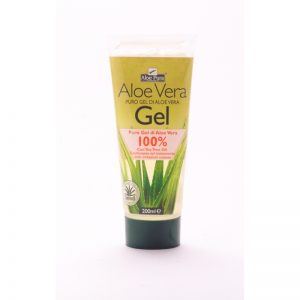
Personally, I just grow a whole bunch of Aloe Vera plants and just rip off a piece whenever I need it, but if you don’t have a green thumb or you just can’t be bothered to grow the (incredibly hardy, practically takes care of itself) plant, having the gel on hand is the next best thing. It’s perfect for soothing charred, sunburnt skin, and also comes in handy if you’re someone that happens to incur a lot of burns and scalds while cooking dinner.
Please remember that if you do choose to go the gel route, you choose one that’s water-based and completely natural. The best way to ensure that you get a quality product is to purchase from a health food store as opposed to buying one of the gels from your local grocery store.
Arnica Cream/Gel
If you happen to be a clumsy person or if you’re someone who bruises easily, this stuff is going to become your new best friend – It’s absolutely perfect for use on sore muscles, bruises, and all kinds of sprains and strain because of the anti-inflammatory and circulation stimulating properties of the arnica flower.
A few years ago, I was in a car accident (a rollover to be more precise) in which miraculously, no one was seriously injured, however, it left me pretty sore from the jolt. I happened to be working in a health food store at the time, and one of the girls I worked with suggested I use arnica gel to help ease my sore muscles. I kid you not, I felt better immediately after rubbing it in, and I was almost back to 100% within 24 hours. This stuff is no joke, and everyone should definitely have it on hand (it’s also great for those old sports injuries that you can feel every time it rains and sore backs). Just don’t use it on any areas that have broken skin.
Chamomile Tea Bags
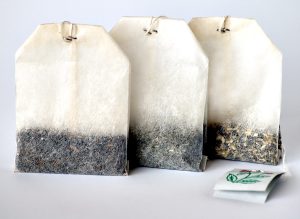
I understand that tea bags are usually something you keep in the kitchen, and by all means, keep them there if that’s where you’re most comfortable having them; just make sure you have them in the house – The chamomile flower is quite tasty, and is gentle enough that children can take and stomach it with no problem at all. It has antibacterial, anti-inflammatory, and antispasmodic properties and it can be used as a mild sedative if you and your little one(s) are having difficulty drifting off to sleep. Use as a tea to help relax you and/or help relieve indigestion, or use topically to help sooth minor skin irritations.
Echinacea
I keep both a tablet and a liquid form of Echinacea on hand. Still, if you’re only going to choose to keep one of them to keep in your all-natural first aid kit, make it the liquid form – It’s the most versatile and can be used both internally and externally to treat any type of infection. Take it when you start feeling a cold or flu coming on to help curb it or use it to help heal the open wound from when you accidently cut yourself making dinner last week.
Elderberry

Elderberry extract is usually found in capsule or liquid form and is something you should have on hand to stop a cold or flu in its tracks (it’s also a pretty good preventative measure against getting sick in the first place, so if your household tends to get plagued with sickness during the winter months you might want to consider working elderberry into your morning routine). Suppose you’re someone who flies a lot for business or personal pleasure. In that case, you might want to consider taking elderberry before your flight to reduce your risk of contracting any foreign illness that your body may not have the antibodies to fight off.
Eucalyptus Essential Oil
I’ve been talking about essential oils a lot lately, but even then, they’re not getting the recognition they deserve – These things are absolutely amazing! This particular one has both antibiotics as well as antiviral properties, which makes it perfect for fighting flus, colds, sinus, and other types of infections. Put a couple of drops in your bath or a vaporizer and inhale if you’ve got a stuffy nose, or apply to your skin with a carrier oil and/or some witch hazel to help heal cuts, burns, and other skin irritations. If you have a vaporizer handy, put a couple of drops of the essential oil in it to purify the air in the room.
Please remember that when you’re purchasing the oil, make sure that you’re investing in the actual essential oil and not in a fragrant oil – They might smell pretty, but they don’t have the same benefits.
Ginger
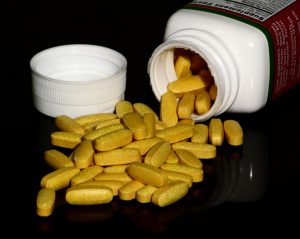
Pure ginger lozenges, crystalized ginger, ginger tablets or capsules, and even ginger tea can all be handy to have on hand for when you’re feeling ill or experiencing indigestion. That’s why your mother used to give you flat ginger ale when you weren’t feeling well as a child. However, ginger ale is chalked full of sugar and other things that you probably don’t want to be putting in your body, especially if you’re trying to live more organically. It’s also been proven to be more effective than Dramamine when it comes to relieving the symptoms of motion sickness.
Lavender Essential Oil
This handy little oil is basically a cure-all. It has antiseptic, anti-inflammatory, and even sedative properties, which makes it perfect for treating everything from cuts and scrapes to burns and even headaches, anxiety, and insomnia. Put one to two drops in some chamomile tea to help you sleep, add a couple of drops to some carrier oil to help relax you, or put some in a vaporizer to clean the air and help you relax (never add more than a drop or two if you’re taking it internally, and remember to make sure that you haven’t purchased a fragrance oil – Many lavender oils are cut with fragrance so that they can be sold cheaper; the lavender essential oil isn’t the cheapest, but it’s definitely worth the investment).
Laxative Herbal Tea Bags
I shouldn’t have to explain what these are used for; it’s right there in the name. But they’re certainly handy to have on hand to help ease things along if you’re having trouble going. Not only is the tea better for you than the laxative medication you usually buy at the pharmacy, but most blends have incredibly palatable flavor combinations like cinnamon, fennel, licorice, and/or ginger.
Peppermint Essential Oil
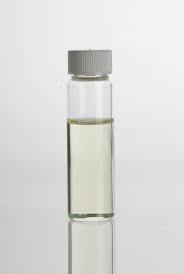
This is another thing to have on handy if anyone in your family tends to get sick as it’s a sure fire way to clear your sinuses out quickly when you add a couple of drops to a bath or apply it to your body with a carrier oil.
It also helps take the itch out of insect bites in almost no time at all which makes it an absolutely must have item to have on hand during bug season (because there’s definitely nothing worse than being itchy and not being able to do anything about it.
Witch Hazel Extract
Distilled witch hazel has anti-inflammatory and antiseptic properties which makes it perfect for using on insect bites and other mild skin irritations. It’s also a mild astringent that’s perfectly safe for using on your oily skin during the hot summer months. Witch hazel is a definite must have for every single natural first aid kit as it makes an excellent base for diluting various essential oils so that they can be used as topical first aid remedies. Witch hazel should never be taken internally.
Cosmetic Clay
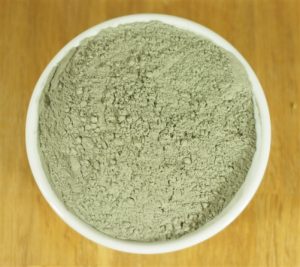
This one might sound a little odd, but I promise you that having it on hand will come in handy more than once – It’s incredibly helpful in healing rashes and helping take the itch out of insect bites.
The clay doesn’t cost much to buy, and it stores pretty much forever as long as you keep it in a sealed plastic container.
Electrolyte Replacement
Whether you choose coconut water or powder packets of Emergen-C, you should always have something on hand to replace the electrolytes in your (or your family’s) body when you’re sick or dehydrated.
Other Handy Things To Have On Hand
Now that you’ve got the remedy part of your all=natural first aid kit put together, it’s time to fill it with all the rest of the things you might one day need. These things are:
- Bandaids (in a variety of sizes, including butterfly bandages – You never know!)
- Gauze (Pads and a roll of it, as well as the tape to hold it in place).
- A small bottle of alcohol could come in handy in the event anyone ever comes into contact with poison oak or ivy.
- An elastic bandage wrap to take care of any sprains or twists.
- A small pair of scissors to cut bandages with if you need to.
- Tweezers to remove any splinters or ticks you happen to come across.
- An instant-read thermometer so you can keep an eye on any fevers.
With all of these items at your disposal, you’ll be ready to take on just about anything that life could possibly think of to throw at you!
